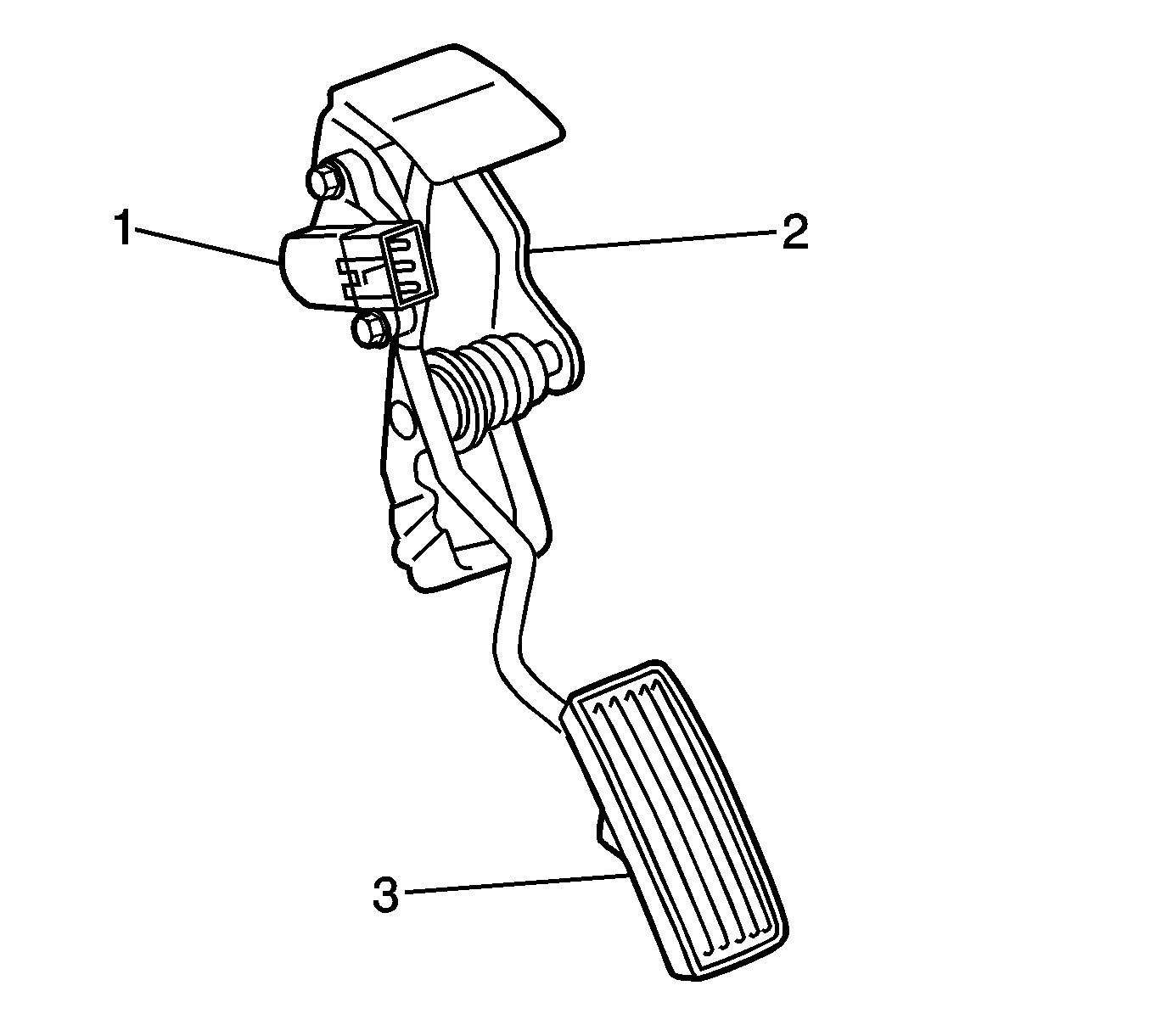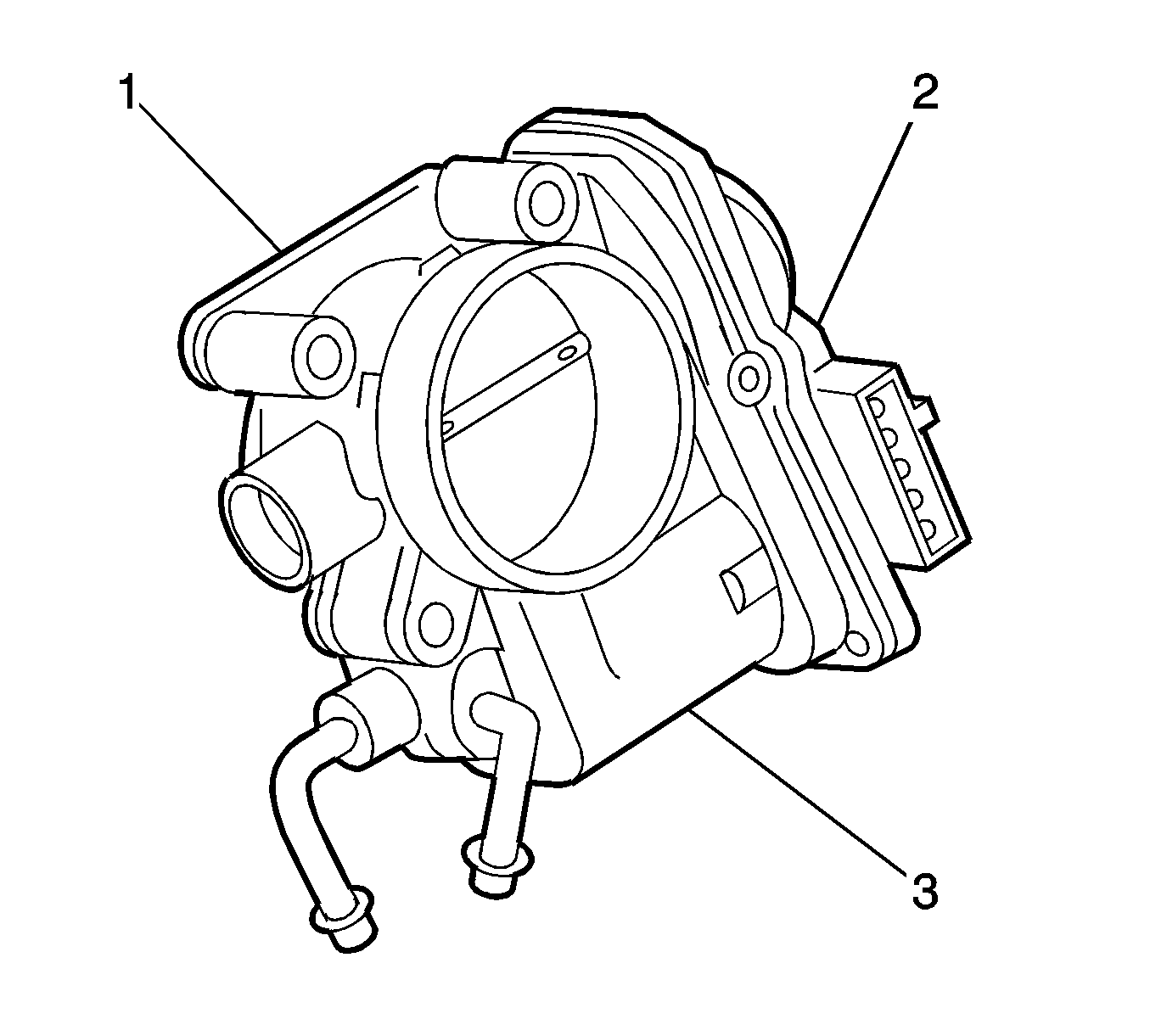Function
The throttle actuator control (TAC) system delivers improved throttle response and greater reliability and eliminates the need for mechanical cable. The TAC system performs the following functions:
| • | Accelerator pedal position sensing |
| • | Throttle positioning to meet driver and engine demands |
| • | Throttle position (TP) sensing |
| • | Cruise control functions |
| • | Throttle control for traction control and stability control systems |
The TAC system includes the following components:
| • | The accelerator pedal position (APP) sensors |
| • | The throttle body assembly |
| - | TAC module, attached to the throttle body |
| - | TAC motor, part of TAC module |
| - | TP sensors, part of TAC module |
| • | The powertrain control module (PCM) |
Accelerator Pedal Position (APP) Sensor

The accelerator pedal position (APP) sensor (1) is fastened to the accelerator pedal assembly (2). The APP sensor assembly contains two APP sensors that are operated by accelerator pedal (3) movement. The APP sensors 1 and 2
are potentiometer type sensors each with 3 circuits:
| • | A 5-volt reference circuit |
| • | A low reference circuit |
The APP sensors are used to determine the pedal angle. The powertrain control module (PCM) provides each APP sensor with a 5-volt reference circuit and a low reference circuit. The APP sensors provide the PCM with signal voltage proportional to the pedal
movement. APP sensor 1 signal voltage is low at the rest position and increases to near the 5-volt reference as the pedal is applied. APP sensor 2 signal is about twice the voltage of APP sensor 1 at rest, and also increases as the accelerator
pedal is applied. APP sensor 2 increases at a different rate than APP sensor 1. The APP sensor 1 is responsible for providing the actual pedal position to the PCM. The PCM then sends a throttle position target value to the TAC control module.
APP sensor 2 provides an accuracy check and if necessary, a backup value to the APP sensor 1. The APP sensors are not serviced separately and must be replaced with the accelerator pedal assembly
Throttle Body Assembly



